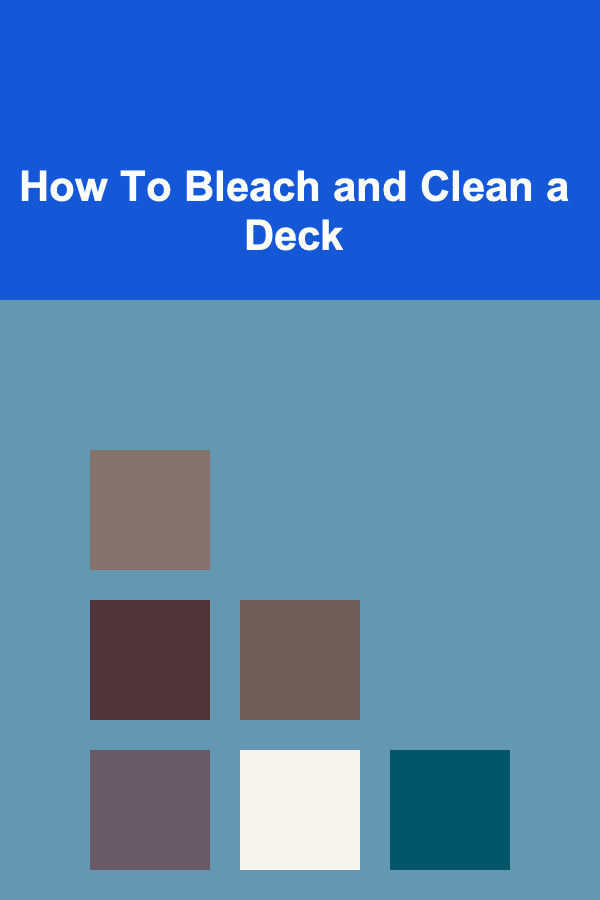
How to Design Your Own Hat Patterns
ebook include PDF & Audio bundle (Micro Guide)
$12.99$10.99
Limited Time Offer! Order within the next:
Not available at this time

Designing your own hat patterns can be a rewarding creative process, whether you're an experienced knitter or a complete beginner looking to explore the world of pattern creation. Hats are a practical and versatile accessory, and the ability to create a custom design opens up endless possibilities for self-expression. This guide will walk you through the steps of designing a hat pattern from scratch, offering tips and insights into the world of hat-making, from the basic elements to more advanced design techniques.
Understanding the Basics of Hat Design
Before you dive into designing your own hat pattern, it's important to understand the key elements of a hat. A basic hat pattern involves three main components:
- The Crown: This is the top of the hat, the part that fits snugly on your head. The shape and size of the crown are influenced by the hat's intended fit and style.
- The Body: The body of the hat refers to the portion that covers your forehead and ears, extending down to the brim.
- The Brim: Not all hats have a brim, but for those that do, the brim is the part that extends outward from the body of the hat. It can be wide or narrow, depending on the desired style.
To design your own hat, you will need to plan out these components. Keep in mind the type of fabric or yarn you're using, as well as the overall fit you want to achieve.
Types of Hats to Consider
Hats come in many shapes, sizes, and styles. Here are some common hat types you may want to consider when designing your pattern:
- Beanies: A simple, snug-fitting hat that typically doesn't have a brim, though some versions may feature a small folded edge.
- Slouchy Hats: These are often looser in fit, with a bit of extra fabric at the back that creates a "slouch" effect.
- Berets: These are flat, round hats that sit atop the head, often made of wool or cotton.
- Fedora/Trilby: These are typically made from felt or other firm materials, with a wide brim and a pinched crown.
- Bucket Hats: These have a soft, wide brim that provides protection from the sun, and they usually have a soft crown.
Each of these styles requires different construction techniques, which will influence how you design your pattern.
Step 1: Choose the Right Materials
The type of material you use for your hat will impact the overall look, feel, and durability. Here are some common materials used in hat-making:
- Yarn: Ideal for knitted or crocheted hats, yarn comes in a wide range of textures and weights, from fine laceweight to thick, chunky yarns.
- Felt: Perfect for structured hats like fedoras and berets, felt is a versatile fabric that can be molded into various shapes.
- Cotton and Linen: Light and breathable, these fabrics are often used for casual summer hats like bucket hats.
- Wool: A great choice for warm, winter hats, wool has the ability to regulate temperature, making it a popular material for beanies and other cold-weather hats.
- Leather or Straw: These materials are often used for more rigid, classic styles like wide-brimmed sun hats or cowboy hats.
When designing your hat, consider the purpose of the hat and the environment in which it will be worn. For example, a knitted beanie would require soft wool or acrylic yarn, while a sun hat might be better suited to cotton or straw.
Step 2: Determine the Hat's Size and Fit
The next step in designing your hat pattern is determining the size and fit. A hat's fit is crucial to its comfort and functionality, so it's important to create a pattern that fits snugly (but not too tightly) around the head. Here are the general steps to measure and size your hat:
- Head Circumference: Use a soft measuring tape to measure the circumference of the head, just above the ears and eyebrows. This measurement will serve as the basis for the hat's size.
- Crown Height: The height of the crown depends on the style of the hat. A beanie might have a shorter crown, while a fedora or beret will have a taller crown. Use the desired height to calculate how much height to add to the crown section of your pattern.
- Brim Width: For hats with brims, consider how wide you want the brim to be. A wider brim is typically seen in sun hats and fedoras, while a narrower brim might be found on casual beanies or berets.
For knitted or crocheted hats, you'll also need to account for stretch. If you're working with a yarn that has elasticity (such as wool or acrylic), the hat may stretch over time. Be sure to adjust your measurements accordingly, particularly for the crown section.
Step 3: Design the Crown
The crown is the most important part of the hat, as it provides the structure and shape that will fit comfortably on the head. You can choose to create a simple crown or experiment with different shapes and designs. Here are a few options:
- Basic Round Crown: The simplest crown design involves a circular shape that gradually increases in diameter as you work in the round. You will increase stitches evenly around the hat until you reach the desired size.
- Domed Crown: If you want a more structured look, you can create a domed crown. This involves decreasing the number of stitches as you work toward the top of the hat, creating a more defined, shaped look.
- Slouchy Crown: For slouchy hats, you can work in a more relaxed way by increasing fewer stitches as you go around, allowing for a loose fit at the top of the head.
Experimenting with different crown shapes can lead to a unique design. You may want to make a few prototypes and test them on different head sizes to ensure the fit is just right.
Step 4: Add a Brim (Optional)
A brim is not necessary for all hats, but for styles like fedoras or sun hats, it is an essential element. When designing a brim, consider the width and stiffness. You can create a simple, flexible brim, or add a more structured look by using a stiffer material like felt or interfacing.
Here are a few ways to design a brim:
- Simple Rolled Brim: A rolled brim is common for knit or crocheted hats. To create this, simply work in the round until the hat reaches the desired length, then fold the bottom edge upward and sew it into place.
- Wide Brim: For a wide-brimmed hat, you can increase the number of stitches around the bottom of the crown to create a gradual outward flare. You may also choose to stiffen the brim with a fabric lining or interfacing.
- Upturned Brim: Some hats feature brims that are turned upward at the sides, like a traditional fedora. To achieve this effect, simply increase the stitches at the crown and then fold the brim upwards.
Step 5: Add Decorative Elements
Decorative elements can give your hat a unique look and elevate it from a basic design to something truly special. Consider these options for personalizing your hat:
- Embroidery: Adding embroidery to the crown or brim of the hat can create intricate designs or add a personal touch.
- Pom-Poms: A fun and playful addition, pom-poms can be attached to the top or brim of a beanie or slouchy hat.
- Buttons, Bows, or Ribbons: These accessories can be sewn onto the hat for a chic or vintage-inspired look.
- Color Blocking: If you're knitting or crocheting, you can create a striped or color-blocked hat by alternating yarn colors in specific sections of the crown or body.
Step 6: Finalize and Test Your Pattern
Once you've designed your pattern, it's time to test it out. Create a sample of your hat using your pattern and check for fit, comfort, and aesthetic. Don't be afraid to make adjustments---designing a custom hat is an iterative process, and it's normal to make small tweaks along the way.
Test the pattern on a variety of head sizes if possible, and be prepared to alter the fit if necessary. After refining your design, you can create more hats or even share your pattern with others.
Conclusion
Designing your own hat patterns is an enjoyable and creative process that allows you to experiment with different materials, shapes, and styles. Whether you're making a cozy winter beanie or a stylish summer sun hat, the possibilities are endless. By following the steps outlined in this guide, you can create a custom hat that fits perfectly, looks fantastic, and reflects your personal style. Happy designing!

How to Get Your Partner on Board with Your Financial Plan
Read More
How to Manage Rental Property During the Off-Season
Read More
How to Organize Seasonal Craft Supplies
Read More
How To Bleach and Clean a Deck
Read More
Enhancing Focus with Neuro-Linguistic Programming
Read More
How to Control Sodium Intake in Your Diet
Read MoreOther Products

How to Get Your Partner on Board with Your Financial Plan
Read More
How to Manage Rental Property During the Off-Season
Read More
How to Organize Seasonal Craft Supplies
Read More
How To Bleach and Clean a Deck
Read More
Enhancing Focus with Neuro-Linguistic Programming
Read More